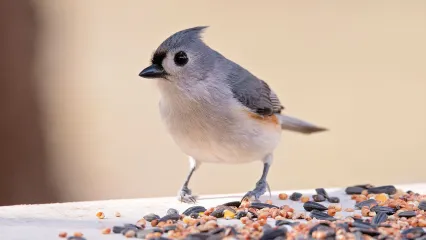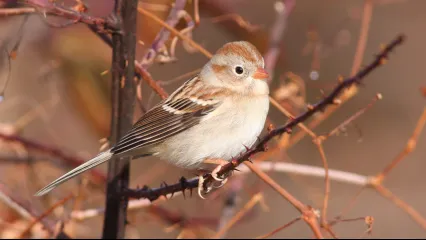
Description
The whooping crane is the tallest North American bird, standing at nearly 5 feet in height and having a wingspan of 90 inches. It is a large crane with red markings on its face and crown and black feathers on the end of each wing. Juvenile birds have varying amounts of reddish-cinnamon coloration on the neck and back. Cranes are easily distinguishable from other large birds by the way they hold their necks out completely straight in flight, as opposed to egrets and pelicans that hold their necks in an “S” shape while flying.
After decades of unregulated hunting and habitat loss, the total global population of whooping cranes had been reduced to 15 individuals by the mid-1940s. An intensive captive-breeding program and close monitoring of wild birds slowly increased the population. With both wild and captive whooping crane populations, the total number of birds in existence is approximately 600 individuals. Ongoing threats to migrating cranes include illegal poaching (killing) of birds and the collision risk associated with manmade structures such as powerlines, radio towers, and wind turbines. Each year, the Wildlife Diversity Program assists the U.S. Fish and Wildlife Service with the monitoring of this endangered crane’s migration. In addition, other state wildlife agencies throughout the flyway coordinate and track whooping crane movements. When cranes are spotted using a stopover site, specific information is recorded, such as number of birds, location, time, weather conditions, etc. The Wildlife Department encourages the public to submit sightings of whooping cranes to wildlifedepartment.com. U.S. Fish and Wildlife Service staff at Aransas National Wildlife Refuge conduct a census of overwintering whooping cranes before the birds migrate north to their breeding grounds.
Report Whooping Crane Sighting Online
Size
59 inches tall. 90 inch wingspan.
Habitat
Whooping cranes most commonly migrate through the western half of the state, typically east of Guymon, OK and west of Interstate 35. Although rare, cranes have been known to land on sites in central Oklahoma, including reservoirs in the Oklahoma City metropolitan area. While moving through Oklahoma, whooping cranes typically use shallow wetlands, marshes, the margins of ponds and lakes, sandbars, shorelines of shallow rivers, wet prairies and crop fields near water. The Salt Plains National Wildlife Refuge, near Jet, OK is a very important migration stopover area and has been designated as critical habitat for the species.
Life Cycle
Whooping cranes only occur in Oklahoma during migration periods, typically during the months of April and October. While the closely-related sandhill crane often aggregates in flocks of 50 or more birds, whooping cranes rarely migrate in groups larger than eight birds. Birds spotted in the state are part of the largest and only self-sustaining wild population, numbering just over 350 individuals. This population, known as the Aransas-Wood Buffalo population, breeds primarily on the Wood-Buffalo National Park in Canada and over-winters on the Aransas National Wildlife Refuge in Texas. During migration, cranes often land on agricultural fields near a water source to feed on invertebrates, grains, and small animals. As is typical of many migrating birds, whooping cranes are usually at a stopover site for only one to three days.
How To Observe
Most whooping cranes are reported in Oklahoma from mid-October through November. Whooping crane sightings can be shared with the Wildlife Department online.



